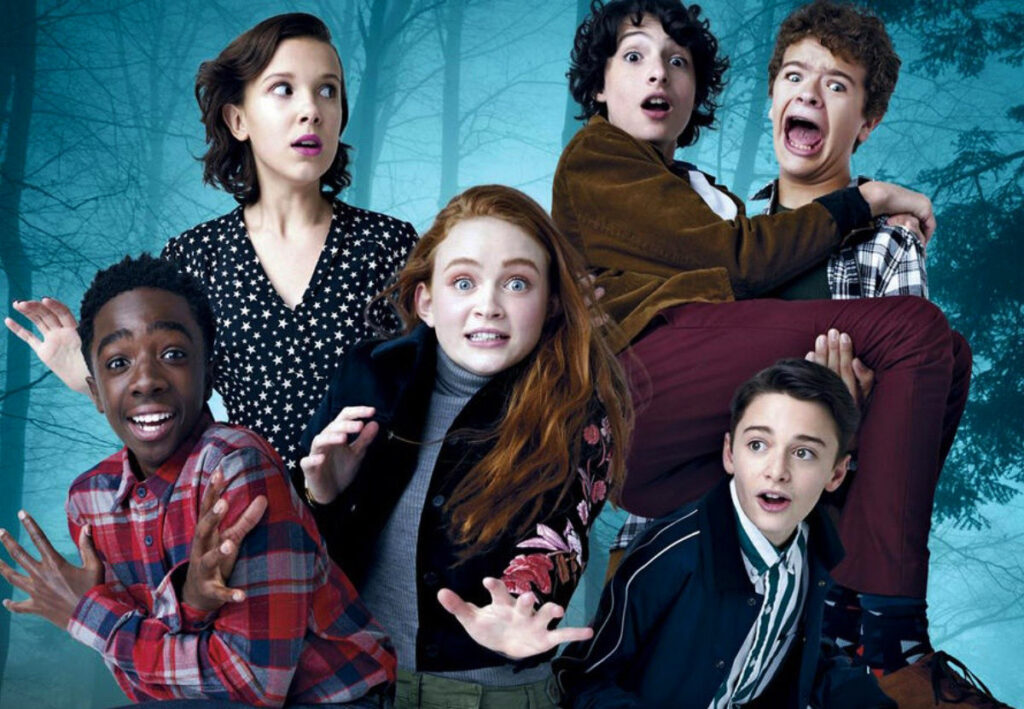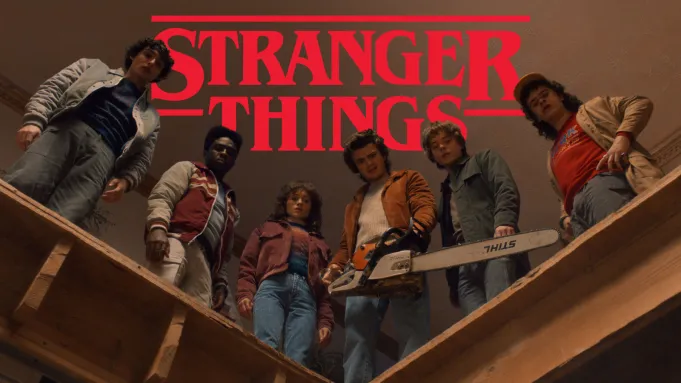Stranger Things Season 5 honestly feels like the show’s most ambitious and emotionally powerful chapter yet. This time, Hawkins faces its darkest hour, and the Duffer Brothers beautifully weave together every character arc, supernatural mystery, and the deep emotional scars that have defined the series from the very beginning. It’s not just about monsters or 80s nostalgia anymore — this season dives deep into trauma, found family, resilience, redemption, and the true cost of heroism when everything falls apart. Watching it, I felt like it wasn’t just a sci-fi horror story; it was a powerful emotional closure and a mirror showing how we all fight our own darkness in different ways.
Also Read: Tomb Raider: The Netflix Series Ends with Season 2 — What Fans Should Know

Trauma, Loss, and Emotional Survival
The new trailer reveals a grim, battle-worn Hawkins. Unlike earlier seasons that started with “normal” routines, season 5 plunges viewers straight into chaos: the town is scarred, militarized, constantly surveilled, and reeling from supernatural devastation. Children and parents alike are traumatized by deaths, disappearances, and breakdowns in trust. Will Byers, forever changed by his time in the Upside Down, once again finds his agency threatened by Vecna’s manipulations—a powerful metaphor for lingering PTSD and how childhood trauma shapes adult identity.

Max’s arc serves as another embodiment of loss and survival, battling physical and psychological scars after surviving Vecna’s attack. Lucas rescues her in the trailer, but their storyline highlights the fragility and endurance of teen friendships under supernatural strain.
Found Family and Unconventional Bonds
Stranger Things has always centered on the concept of “found family”—the tight-knit group of misfit friends, surrogate parents, and allies who band together in the face of horror. Season 5 intensifies this theme, with the characters forced into even closer quarters to combat overwhelming external threats. As “normal life” becomes impossible, friendships and surrogate familial connections deepen out of necessity, not just preference.

The inclusion of Hopper, Joyce, Murray, and the kids in the fight for Hawkins emphasizes a multi-generational alliance. Cohesion is tested as grief and conflict emerge, but love and loyalty prevail. These bonds serve as a counterweight to the isolating brutality of the Upside Down and governmental mistrust.
The Upside Down: Shadow and Mirrors
Season 5 finally promises to address one of the show’s biggest long-running mysteries: the origin, nature, and symbolism of the Upside Down itself. This sinister parallel dimension represents more than just a source of monsters—it mirrors the inner world of each character, embodying their fears, regrets, and hidden traumas. In arc analyses, some critics frame the Upside Down as a metaphor for shadow work—a psychological confrontation with one’s own darkness.
Vecna, who manipulates memories and pain, personifies the destructive side of unchecked trauma and power. As the final showdown draws nearer, themes of internal transformation and self-acceptance become central: for Eleven, confronting her traumatic past; for Will, reclaiming autonomy; for Max and others, finding hope despite suffering.
Redemption, Forgiveness, and the Grey Zone
No character in Stranger Things is entirely good or bad; nuanced redemption arcs abound. Nancy’s evolution—from selfishness to selflessness and guilt over Barb’s death—exemplifies a journey of atonement. Steve Harrington’s growth from a shallow popular kid to heroic protector, and even Eleven’s ongoing struggle to control her powers responsibly, all speak to the possibility of change and forgiveness.
True heroism, the show posits, isn’t clean—it’s born of error, pain, and second chances. Dustin, often the comic relief, is hinted to undergo a maturation arc involving justice for Eddie and a more serious integration of courage and intellect.
Facing Evil: Sacrifice and Moral Complexity
Central to season 5 is the notion that defeating evil requires sacrifice—not abstract or cinematic, but gritty and costly. As Vecna seeks to “drain every last ounce of suffering” from Hawkins, characters are forced to weigh personal safety against the greater good. The trailer hints at possible deaths, final acts of bravery, and the haunting specter of choices that cannot be undone.
The fate of Hawkins itself emerges as a thematic question: Can a community survive after trauma on an apocalyptic scale? Is salvation possible, and what does it cost? The answer, season 5 suggests, lies within authentic connections—standing in solidarity even when the world is collapsing.
Growth, Change, and the Passage of Time
The aging of the cast itself is woven into the story’s evolution. Where past seasons played on youth and innocence, season 5 grapples with coming of age amidst horror. The older protagonists must let go of childhood, accept new roles, and come to terms with the irreversible impact of the events in Hawkins. Time, memory, and nostalgia are not just background details—they’re core to the narrative’s emotional weight.

The Final Word: Stranger Things as Modern Myth
Stranger Things season 5 offers not just entertainment, but a meditation on darkness, hope, and the human condition. In the Duffers’ hands, the epic battle against Vecna and the Upside Down becomes a symbolic confrontation with the traumas and fears that define a generation. It’s a story about outsiders who, through love and friendship, dare to confront the monsters within and without—and about the possibility of healing after catastrophe.
As the series concludes, viewers are left with questions about survival, transformation, and what it means to choose courage over despair. Stranger Things doesn’t shy away from the grey areas: every character, every relationship, and every sacrifice is rendered with ambiguity and compassion.
If the themes and storytelling deliver on these promises, Stranger Things 5 may not just end a saga—it might become an enduring symbol of resilience for its millions of fans. The countdown to Hawkins’ final battle is also a countdown to one of television’s most thematically compelling farewells.
